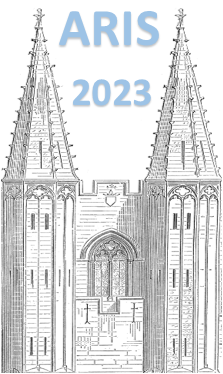Orateur
Description
The heaviest elements are of interest to nuclear and atomic physicists due to their peculiar properties. While nuclear shell structure effects are responsible for their very existence stabilizing them against spontaneous disintegration, the structure of their electronic shells is affected by strong relativistic effects leading to different atomic and chemical properties compared to their lighter homologs. The atomic structure can be probed by laser spectroscopy. This is a powerful tool to unveil fundamental atomic and, from the determination of subtle changes in atomic transitions, nuclear properties. The lack in atomic information on the heavy element of interest, the low production rates, and the rather short half-lives make experimental investigations challenging and demand very sensitive experimental techniques.
Laser spectroscopy of accelerator produced heavy nobelium (No, $Z$=102) isotopes in atom-at-a-time quantities became accessible in the pioneering experiment employing the RAdiation Detected Resonance Ionization Spectroscopy (RADRIS) technique at the velocity filter SHIP at GSI, Darmstadt. More recent measurements with additional advancements of the setup and employing a novel mode of the RADRIS technique, where the desired nuclides are bred by radioactive decay on the capture filament, extended the reach of the method to $^{251,255}$No and, for the first time, to on-line produced fermium (Fm, $Z$=100) isotopes. These on-line experiments are complemented by off-line laser spectroscopy measurements at the RISIKO mass separator at Mainz University on reactor-bred heavy actinides with suitable long lifetimes. Hot-cavity laser spectroscopy on radio-chemically purified samples enabled the investigation of isotopes of the heavy actinides curium (Cm, $Z$=96), californium (Cf, $Z$=98), einsteinium (Es, $Z$=99), and fermium. This experimental endeavor is accompanied by improvements of theoretical atomic calculations enabling the determination of nuclear ground state properties from the extracted atomic observables of isotope shifts and hyperfine structure parameters. This provides insight to the peculiar nuclear nature and especially the deformation of the heaviest elements. The obtained results will be discussed in view of nuclear theory predictions together with the perspectives for laser spectroscopic investigations in even heavier elements.

